Managing by exception: Simplifying digital chemical management
Chemical injection on remote sites is becoming more common within the industry. Applications can include methanol injection to prevent “freeze-ups” or the injection of corrosion inhibitors to protect equipment and pipelines. Chemicals injected include methanol, demulsifiers, defoamers, foaming agents, biocides, wax inhibitors, and clarifiers. Chemical injection management has traditionally been labor-intensive, requiring that staff make frequent trips to many distant sites to check pump calibration, change injection rates, check chemical tank levels, and perform maintenance. A (minimum) weekly visit is required to ensure that any period of pump downtime will not cause excessive damage to equipment, lead to environmental harm, or a loss of production.
Forward-looking operators have embraced digitization of their fields and are “managing by exception” to improve productivity. A digital control and monitoring system eliminates the need for frequent site visits and provides immediate notification when problems arise. This ensures that staff can be dispatched quickly to correct issues before they further compound. Managing by exception also results in fewer overall trips to site and fewer hours on the road, with a reduced overall exposure to workplace and travel hazards.
The benefits of complete chemical management programs are well-proven and widely documented, and yet, many operators remain hesitant to adopt digital systems. “Complete” chemical management systems can be overwhelming, requiring a broad rollout of software, hardware, IT support, data security, smart phone, and wireless device connections. In addition, legacy injection equipment in the field is normally not capable of being digitally controlled, and these legacy pumps are not sufficiently reliable or accurate to be left unattended for longer durations. As a result, many operators feel trapped, leaving digital chemical management on the backburner.
Operators will be relieved to hear that enterprise-wide systems and wholesale organizational changes are no longer required to realize the benefits of digital chemical management. The first step is identifying the most essential components of a well-designed system, which includes a smart pump with high reliability, a tank level measurement system, and a remote monitoring system. Let’s take a closer look into these three technologies:
SMART PUMPS
The two fundamentals to the success of every chemical program are selecting the right chemical and ensuring it is delivered to the process as planned. The basic design of low-cost chemical injection pumps has been unchanged for decades, pre-dating the digitization of the modern oil field. Design features such as manually adjustable stroke lengths or manually adjustable plunger packing do not lend themselves to digital control and unattended operation.
With the goal of digitization in mind, it cannot be stressed enough to ensure that a smart pump (pump/motor/controller) is included as part of new system design, Fig. 1. For existing fields, legacy pumps can be retrofitted with smart pump controllers and Smart Sight Glass technology (flow measurement and feedback control) that can make legacy pumps act like a “smart” pump; however, these retrofits do not address the pitfalls of legacy pump designs. Below is an outline of the critical features in a smart pump required for a successful chemical program.
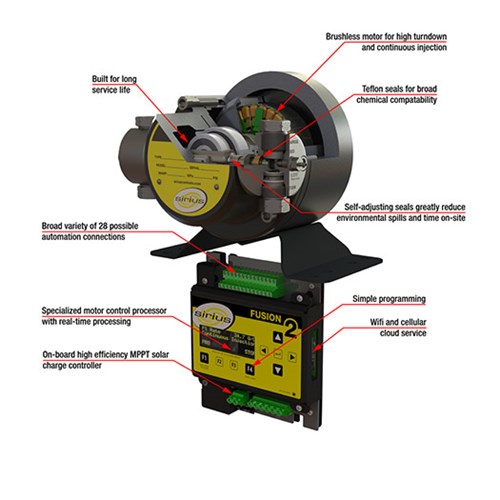
FIG. 1. Schematic of smart pump, motor, and controller.
Autonomous local control (ALC) is the local monitoring of multiple parameters combined with intelligent internal control adjustments made without manual interaction, analysis, or human input. ALC can, for example, maintain injection rates by compensating for process pressure changes, over-tightening of packing, day/night voltage variations on solar-powered systems, and pump wear over time.
Communication. The ability for the controller to pair with a control and monitoring system (SCADA, InSight Connect or other). Data monitored typically includes desired flowrate, actual flowrate, and system voltage. This can be expanded to include variables such as power draw, process pressure, temperature, as well as pump-specific performance indicators such as pump calibration factor and preventative maintenance data.
Automation. Legacy chemical pumps typically require a combination of manual stroke length adjustment and timer setting changes to adjust injection rates. These features seriously limit the systems’ potential for unattended operation. Today’s smart pumps are controlled with fully digital controllers and BLDC brushless motors which enable broad turn-down ratios and the ability to inject chemical continuously across a wide range of flowrates. This is especially important for applications where the desired or optimal injection rate varies as a function of local variables such as temperature, production rate, or process pressure. Without having a smart pump, these numerous rate adjustments require frequent site visits and time-consuming adjustments.
Accurate injection is essential for the success of a chemical program. The pumping system design must be capable of maintaining accuracy in the face of:
- Pressure fluctuations—for legacy pumps, motor load, and thus motor speed, is correlated to pump pressure.
- Voltage fluctuations—for solar-powered systems, natural day/night battery voltage fluctuations can have a direct impact on motor speed.
- Seal conditions—Many legacy pumps use an adjustable packing that must be tightened regularly; this frequent wear and readjustment leads to large variations in friction on the plunger, which causes varying motor speeds and pump stroke rates. Furthermore, these seals are subject to dimensional changes due to temperature such as day/night temperature swings or friction-induced heating. Modern pumps use self-adjusting, spring-energized seals that provide consistent performance with no need for regular adjustment.
Low maintenance. The “managing by exception” philosophy requires that equipment runs reliably to minimize unplanned site visits. For example, legacy pumps with adjustable packing rely on operators to regularly visit the pump for packing adjustment and pump calibration. Modern pump spring-energized seals, which are self-adjusting, can run unattended for long periods. Figures 2 and 3 show the difference in the seal designs.
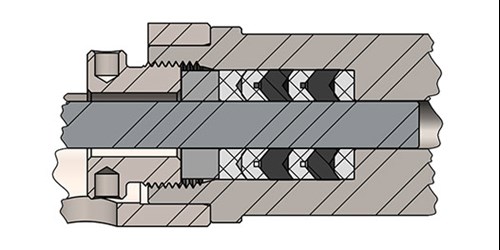
FIG. 2. Cut away rendering of legacy packing gland.
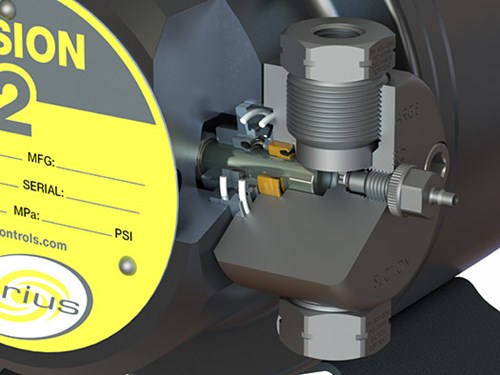
FIG. 3. Innovative spring energized seal design.
The performance of spring-energized seals used in chemical injection applications was documented over an eight-year period. On average, the seals operated for over four years before a service kit was required, Fig. 4. This service life far outlasts that of adjustable packing, which tends to last six months to a year, not including the frequent adjustments that are necessary to prevent leaks. Another high maintenance item for legacy pumps is the use of brushed DC motors. Modern, digital motor controls paired with brushless DC motors have been proven to provide a longer service life and lower cost of ownership.
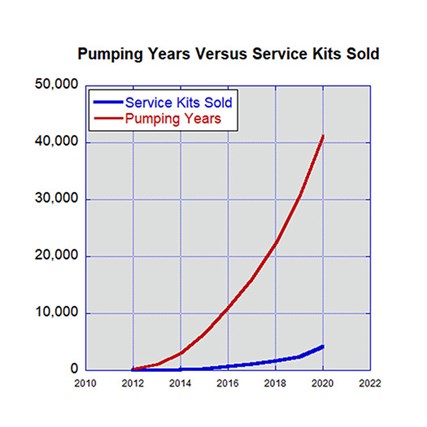
FIG. 4. The performance of spring-energized seals is plotted over an eight-year period. The seals operated for an average of four years before a service kit was required.
TANK LEVEL MEASUREMENT
Traditionally, tank level measurements for chemical inventories are taken only when a chemical technician or pumper is on site. Any issue with the injection system, such as a tank running dry or a pump stopping, could take days or weeks to detect.
Remote tank level measurement is becoming more commonplace and is used to monitor chemical inventories, optimize chemical delivery scheduling, and in some cases, invoicing. These measures are reliant on watching large chemical tanks draw down at extremely slow rates over a long period of time and noting the difference week to week. These long periods of time are the main reason tank level measurement is not sufficiently accurate to determine injection rates.
Additional sources of error include natural tank level fluctuations due to daily temperature swings and chemical loss due to evaporation. As a result, it may take days or weeks to clearly establish long term trends in chemical consumption, defeating its use in any “management by exception” chemical program. New technology like the Smart Sight Glass addresses these limitations and combines both tank level measurement and instantaneous fluid rate measurement in one intelligent device, Fig. 5.
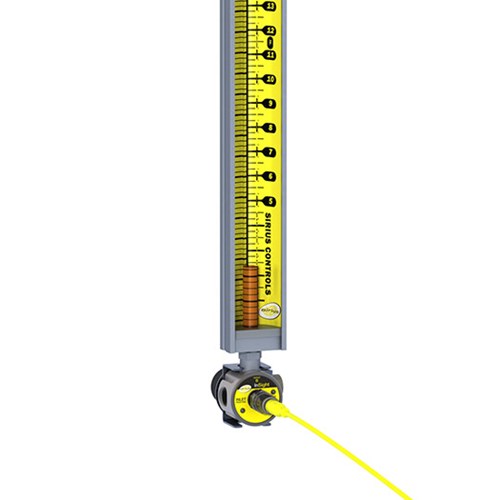
FIG. 5. Smart sight glass.
REMOTE MONITORING SYSTEM
To truly manage by exception without frequent site visits, a remote monitoring system is used to monitor system performance and chemical tank levels. Remote monitoring can be integrated easily into existing SCADA networks or using a standalone IIoT cellular connection, such as the InSight Connect. These systems provide two-way control as well as graphical displays and dashboards, which can be configured with alarms to notify users when performance drifts outside acceptable ranges, Fig. 6. Operators have used these systems to manage and schedule chemical tank refilling, remotely change chemical injection rates, and even remotely diagnose chemical leaks or worn equipment that may soon require service.
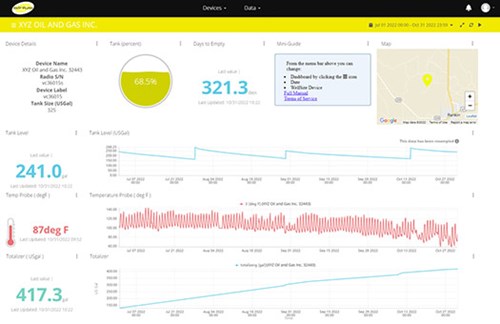
FIG. 6. InSight Connect dashboard.
In many cases data access and data security can be a barrier to widespread adoption of these systems. For example, in cases where an oil and gas production company is monitoring and controlling the complete injection system, and a third-party chemical provider requires access only to the chemical tank measurement to monitor chemical inventory and manage chemical deliveries, many oil and gas companies may deny this third-party access for network security reasons. A solution to this issue is to split the data stream at the device level, connecting the device to a SCADA network for full control by the oil and gas operator, and then providing chemical tank monitoring to the chemical provider through a separate, independent IIOT gateway.
CONCLUSION
With today’s technology, oil and gas companies and their chemical suppliers will benefit from switching to smart pumps and digital chemical management solutions to improve efficiencies. New devices make the transition much less difficult and free users from many of the traditional barriers to automation, such as internal IT conflicts or the need to hire SCADA experts or software engineers. Many operators choose to first adopt these systems on high-value or remote sites to become comfortable with the technology and the methodology, which can then be deployed at scale throughout both new and existing fields.
REFERENCES
- Gould, P., “Digital technology enables intelligent, real-time chemical management,” AOGR October 2018.
- Moffatt, T., “Innovations in autonomous local control gain adoption for wellsite and pipeline chemical injection,” World Oil, November 2018.
- Moffatt, T., “Advances in seal technology drive down operating costs for chemical injection,” World Oil, November 2020.
- Digital transformation/Late-life optimization: Harnessing data-driven strategies for late-life optimization (March 2024)
- The reserves replacement dilemma: Can intelligent digital technologies fill the supply gap? (March 2024)
- What's new in production (February 2024)
- Digital tool kit enhances real-time decision-making to improve drilling efficiency and performance (February 2024)
- U.S. operators reduce activity as crude prices plunge (February 2024)
- U.S. producing gas wells increase despite low prices (February 2024)


